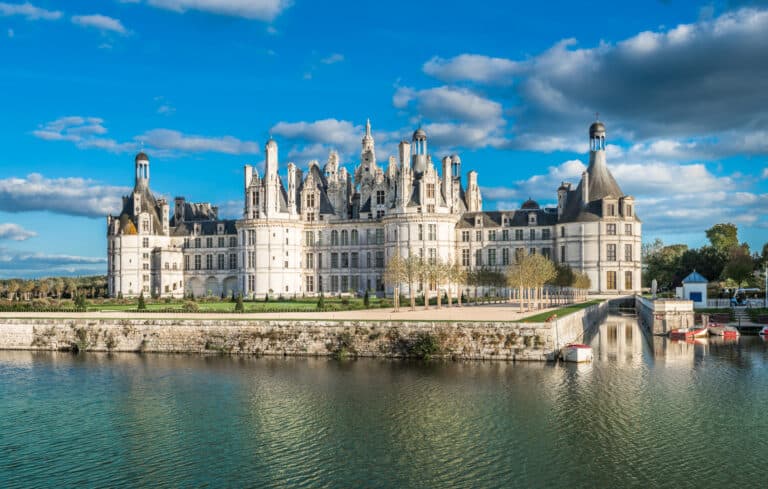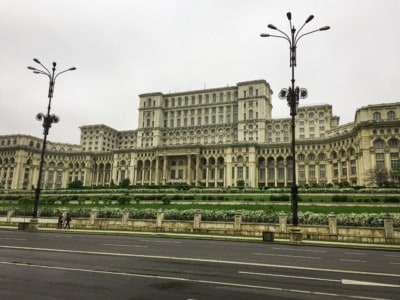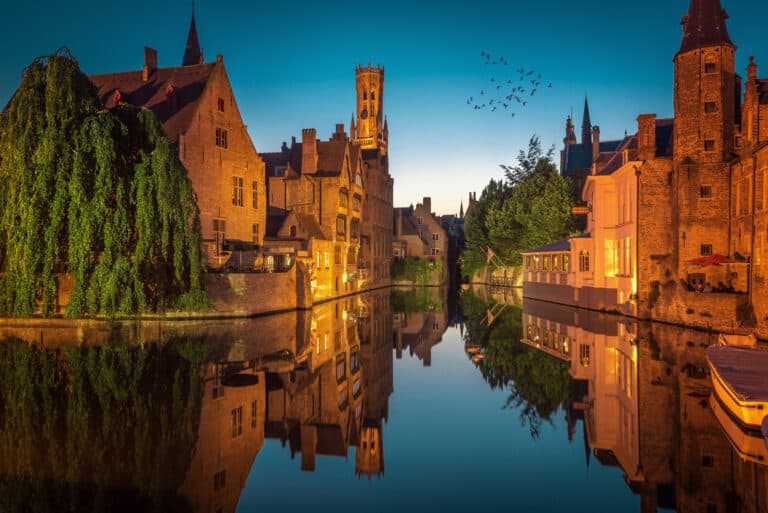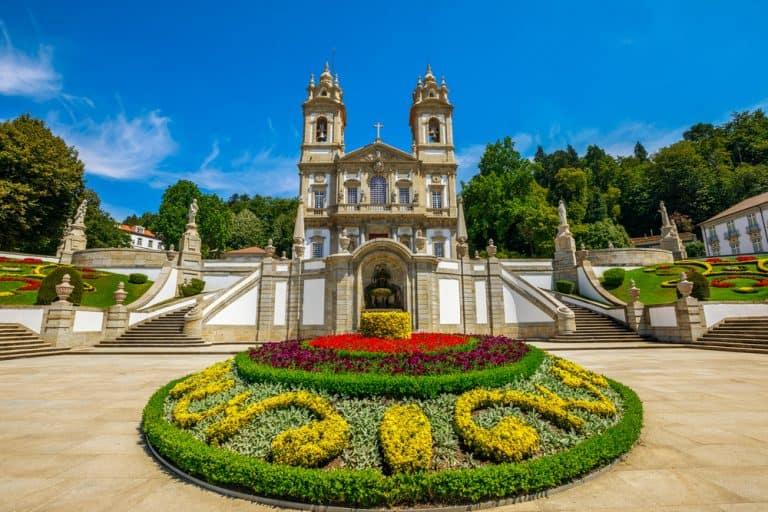The 12 best things to do in Odense Denmark

The charming city of Odense in Denmark is home to a delightful old town, historic houses, museums, and a beautiful park and river to walk along. Famous for being the birthplace of Hans Christian Andersen, the author of over 150 children’s fairy tales, there are also several landmarks where you can learn about his life and work.
And at just a little over an hour and a half from Denmark’s capital, Copenhagen, it’s definitely worth a short visit.
My post lists the best things to do in Odense – for a relatively small city, there’s a lot to see!
Read on to learn more and for practical information to help you plan your short trip to the city.
This post contains affiliate links
Where is Odense?

Denmark is a country made up of different islands.
Odense is located on the central island Funen. This makes it a convenient base for exploring the country and visiting other Danish cities.
To the east is the island of Zealand with the capital city, Copenhagen. Sweden is just a 20 minute ferry ride away.
To the west, there is Jutland with the cities of Aarhus and Aalborg. The south of Jutland borders Germany.
How to get to Odense
Bridges connect the different Danish islands, so it’s easy to get around: Copenhagen is around an hour and a half away by train. You can also travel between the islands by ferry.
If you’re flying, the best airport to fly to is Copenhagen Kastrup airport. It is little over an hour and a half away by train and slightly longer by bus.
Although this might sound too far to enable a short break to Odense, it’s really not. We visited for one night and found the transport to be fast and efficient. We were in Odense in no time after disembarking the plane.
Equally, it would be easy to take a day trip here from the capital if you were spending time in Copenhagen. The trains run every hour so it’s easy to spend one day in Odense.
The 12 best things to do in Odense Denmark
Although Odense is Denmark’s third-largest city, it only has a population of 145,000. Its relatively small size, therefore, makes it easy to explore on foot.
You can do this independently or book a walking tour with an experienced guide. This tour takes you around the top things in the city.
Below are the key things you should put on your list and the 12 best things to do in Odense.
Wander around the old town

Odense is one of Denmark’s oldest cities. So it’s no surprise that it has a charming old town with narrow streets, attractive squares and courtyards, and beautiful houses dating back to medieval times. Devote some time to just wandering through the pretty little streets when you visit.
Walking around, you’ll see that some of the old buildings are brightly coloured. This further adds to the charm of the place. Head to the Nedergade and Overgade streets to see some of the most attractive and oldest houses.
You will also see an interesting selection of street art when you’re in the city. This appears in different places, but the huge Oceania sculpture particularly struck me. It is in the square in Flakhaven near the Italian-style Odense City Hall.
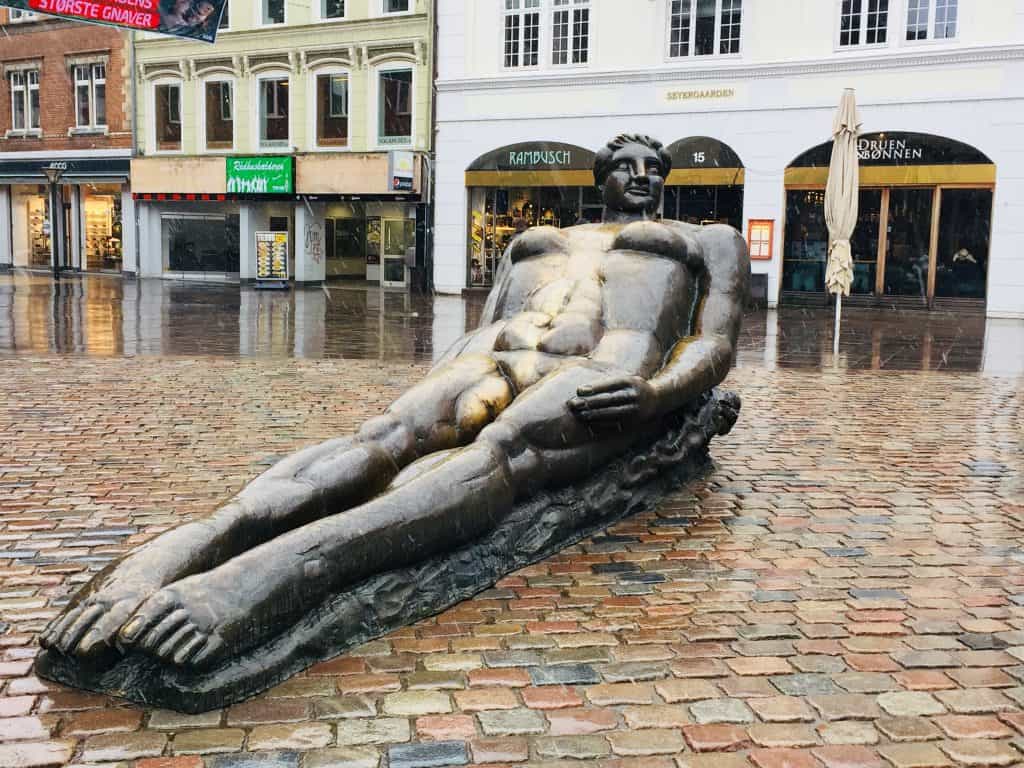
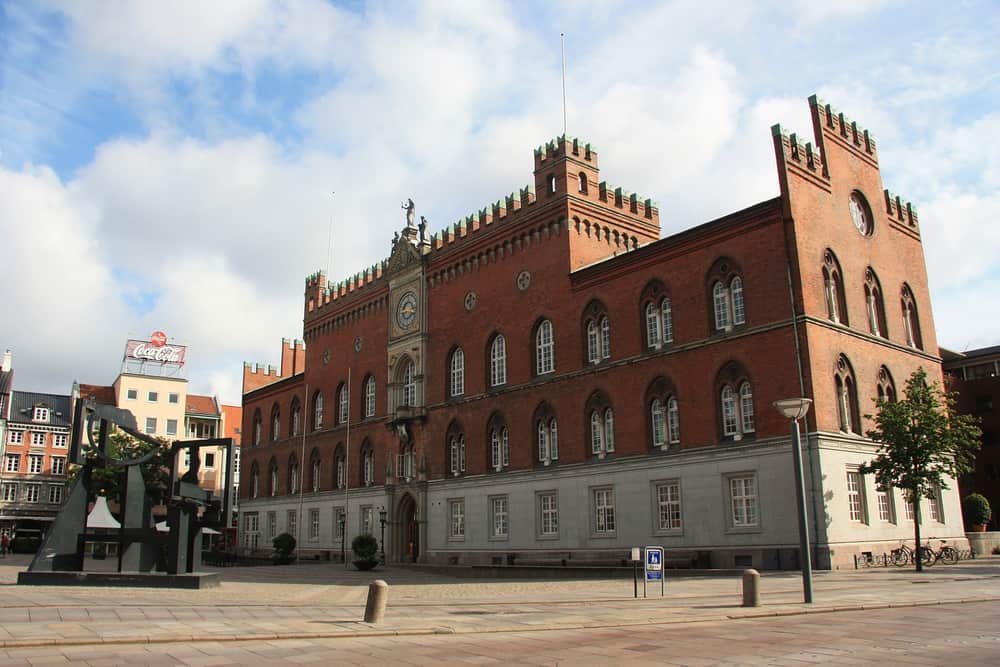
The old town quarter also has a good selection of restaurants, serving traditional Danish and international cuisine.
Visit the City Museum, Montergarden
If you want to see more examples of historic Danish properties, a good place is the Odense City Museum Montergarden. The museum is located in several reconstructed houses dating back to the 16th century.
It has an exhibition that provides information on the city’s history during the time of the Vikings, the Middle Ages, and the Renaissance period. There’s also another on the history and life of the island of Funen. Within the exhibitions, there is a wealth of historic artefacts to browse, and interactive sections.
There’s also a special part for children, which recreates an old house, courtyard, and workshop.
Learn about Hans Christian Andersen
For many people, the main draw to Odense is its connection to its famous son, the author Hans Christian Andersen (often referred to as H.C. Andersen).
He was born in Odense in 1805, and many of his early works were penned while resident here. These include his famous fairy tales and the ones I remember vividly from my childhood, such as the Ugly Duckling, The Little Mermaid, The Snow Queen, and The Little Match Girl.
There are different places in the city dedicated to his legacy: a museum, the two homes that he once lived in (one is his birthplace and one is where he spent his early years), and statues throughout the city.
And if you want to book a walking tour to learn more about the famous writer, click here.
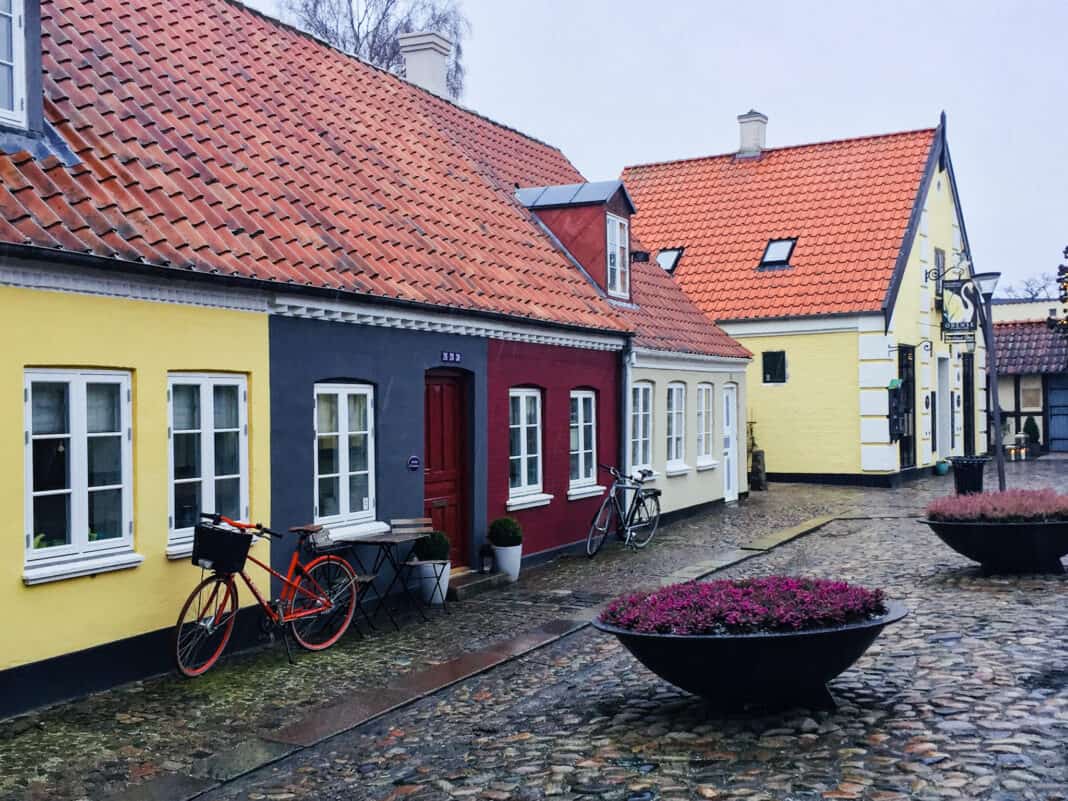
The Hans Christian Andersen Museum
If you’re interested in learning more about the life and works of Hans Christian Andersen, this is where to go. In recent years, a larger museum complex has been opened (known as the HC Andersen House).
Its 9000 square metres site comprises several sections and is one of the best attractions in the city. It’s a fascinating place to spend your time, especially on rainy days when you might want to escape from the showers.
The main museum bills itself as a 360-degree experience, a more modern museum experience. Exhibits are presented via a headset that provides information that allows you to interact with what you are seeing, hearing, and experiencing. As the website puts it “the exhibits talk to you through sound, light and scenography”.
There are different areas to explore, both inside in fairy tale rooms and outside in a beautiful garden. All of them are unique. For example, in ‘The Little Mermaid’ area, you can stare upwards through water at people wandering in the garden above.
For children, there is also Ville Vau where little ones can play and dress up.
Hans Christian Andersen’s childhood homes
When you visit the museum, you also get to enter Andersen’s childhood home as part of your entrance fee. This half-timbered building is set up as it would have been at the time and is a fascinating place to wander around. You can take a look at the bedroom and other living rooms.
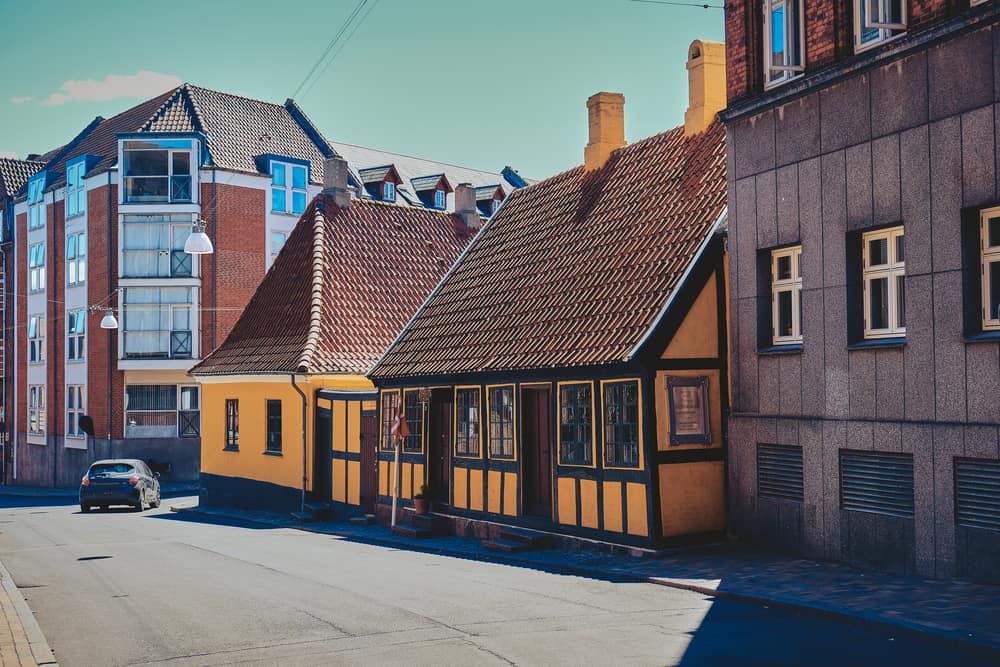
You can learn more about the author’s early life and how he was born in one of Odense’s poorest districts, but despite this, spent time playing with the Prince of the city, Frits, when his mother worked in the castle.
It also tells the story about how he’d decided at a relatively young age to leave the city in favour of the bright lights of the capital, Copenhagen, to make his fame and fortune.
Finally, you can go the birthplace of Hans Christian Andersen during your visit to the city.
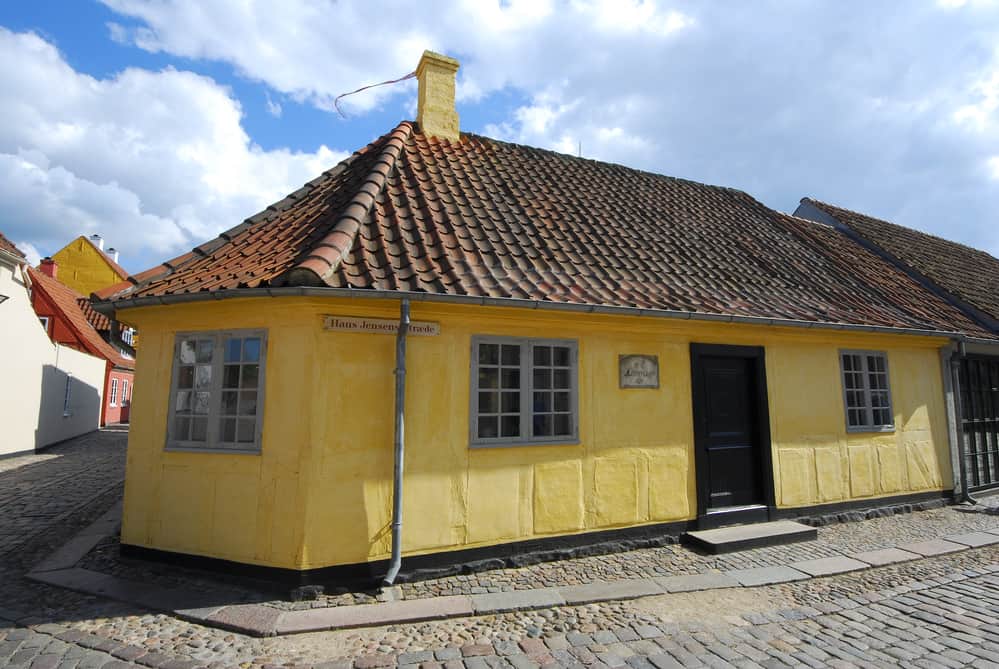
Step into the driver’s cab of the largest steam engine in the country
The Danish Railway Museum (Danmarks Jernbanemuseum) in Odense is dedicated to the history of rail transport in Denmark. It is apparently the largest railway museum in Scandinavia. Fittingly, it is in an original engine shed from the mid-1950s, complete with 21 railway tracks.
The museum is near the central train station, so would be easy to pop into if you’re arriving by train.
You will find an extensive collection of railway carriages and engines here and you can have some fun climbing aboard some of these. They include an old double-decker coach, a goods wagon, and the driver’s cab of the largest steam engine in the country.
There are also other interesting things to see here, including documents, photographs, and models relating to the first Danish railway which started running in 1847. The museum also has a ferry section that displays models of the Danish train ferries from the 1870s, and there is a section with royal train carriages.
If you’re a train buff, visiting Denmark’s railway museum is a great place to go and one of the best things to do in Odense.
Pop into St Canute’s gothic Cathedral
St Canute’s Cathedral (St. Knuds Kirke) is the main cathedral of Odense. It was built in the 14th century and is dedicated to King Canute (Knud), Saint of Odense, who ruled the country in the 11th century. He was murdered on the site in 1086 and his bones are stored in the cathedral’s crypt.

Odense Cathedral is gothic in style. It has a beautiful and elegant interior that is worth popping in to see. You can also visit the crypt to see the King’s remains.
The cathedral is just south of Odense town hall. There is a park outside with a statue of Hans Christian Andersen.
Walk around the Munkemose Park and the Fairy Tale Garden
Aside from exploring the old town, Odense has other areas to stroll around.
The Munkemose Park is particularly lovely, with its parkland and river flowing through it. You can take leisurely walks along the paths that run through the park, hire a pedalo or go on a boat trip.
Click here to book a boat trip in Odense.
The area is a popular tourist attraction. It’s another location in the city to see more reminders of Odense’s links to Hans Christian Andersen. For example, there’s a sea horse with a mermaid on its back when you go into the park. This was inspired by his poem ‘Agnete and the Merman’.
You can then take the short walk through the park and onto Eventyrhaven near the city’s cathedral. This has the ‘Fairy Tale Garden’ where you can cross over the bridge to an attractive garden and sit and look out over the water. There are other unique sculptures to see here, a pergola and a Chinese wall.
This is a great spot to get some fresh air and a bit of exercise. And while Odense is not as frenetic as many bigger cities, if you’re looking for some peace and relaxation, this is a perfect place to go.
Clamber down into a Cold War bunker
For a very different kind of history, – and if you fancy going down into an actual Cold War bunker – then head to the youth hostel in Kragsbjergvej.
Underneath the hostel, you’ll find an original nuclear war bunker and command centre dating back to the 1950s. The bunker covers an area of 450 square metres, with room for some 30 to 35 people. And it has some of its original contents still inside it. There are also three different exhibitions on display.
It’s a fascinating museum, but note that its opening hours only cover weekends and don’t include December.
Visit the Brandts Art museum
The Brandts Art gallery is a museum of classical and contemporary art, photography, and film located in the Brandts Klaedefabrik area of the city. It is in a cultural centre in a restored textile factory with exhibitions laid out over five floors.
Its core collection displays Danish art over the past 250 years. There is also a changing exhibition programme showcasing both Danish and international artists and different mediums.
If you’re interested in art, then this is one of the best things to do in Odense.
See Odense Castle

Odense has a small castle (Odense Slot), an elegant white baroque building that started life as a monastery. The castle is in King’s Park, another of the green areas in the city.
If you arrive by train, you’ll see this when you come out of the station and walk to the centre of Odense and the historic district.
Unfortunately, you can’t go inside the castle as it’s now only used for city officials. But it’s worth taking a look at the outside. The park in front of it is also a lovely spot to sit outside in the summer months with a picnic or to stroll through with an ice cream.
Go out to Egeskov Castle

If you do want to explore inside a Dutch castle, then one of the best places to do this is at Egeskov Castle (Egeskov Slot). This is located in the town of Kværndrup, around an hour away by train.
This would be a trip to consider if you’re in the city for a short break rather than just visiting for the day. It’s one of the top tourist attractions in the area.
The castle is beautiful. The work to turn it from small manor houses into what it is today was completed in the mid-16th century and as a result, it is said to be “one of the best-preserved moated Renaissance castles in Northern Europe today”.
Unlike Odense Castle, you can go inside and explore the interior. You can wander through some of its 66 rooms (including the banqueting hall, hunting room, music room and grain store). You can also go into the Tower Room which gives you superb views out over the grounds.
The castle’s grounds and gardens are extensive. There are several different areas to see (including a kitchen garden, dahlia garden, water garden and fuschsia garden). There is also a 19th century maze, forest playground, tree-top walkway, and cable cars.
You can also visit the different exhibitions and exhibits here, some of which are quite unique. The castle has a collection of classic cars, a display on the history of grocery stores, and an outdoor camping museum. There is also a fashion exhibition and one on the work of the Danish rescue service, Falck.
So even if Renaissance castles are not for you, you’re bound to find something to interest you here.
See the animals in Odense Zoo
Odense also has a zoo, about a 10-minute train ride away (15 minutes by bus). It is Denmark’s first privately owned zoo and has been open for almost a century.
A wide variety of animals can be found here representing the continents of Asia, Africa, and South America. You’ll get to see tigers, zebras, giraffes, bears, red pandas, and gorillas, as well as many species of birds.
There are also times when you can see penguins and sea lions being fed. Or you can book experiences where you get to feed the giraffes yourself.
Go back in time in Funen Village open-air museum
Funen Village (Den Fynske Landsby) is a living museum celebrating the traditional rural life of Funen in Denmark. It is about 5 kilometres outside the city centre, and a 10-minute bus journey. If you’re feeling energetic, you can also walk there, which will take around an hour.
The village recreates rural life from the 1800s and demonstrates how people lived and worked during this time. In so doing, the site is itself self-sustaining: the buildings have been built from timber and thatch, produce is grown on the land, there are farm animals, and people make their clothes and possessions.
In a world where we’re all trying to recycle more and be less wasteful, it’s hard not to think that the lesson here is that life back in the 1800s perhaps more readily met these aims.
You can take a free digital tour of the village or alternatively book a guided tour. The guided tour lasts for 75 minutes and takes you around the village where you’re given information on life back in the time of Hans Christian Andersen.
If this interests you, note that Funen open-air village is only open on selected days after the end of October and then opens again in April. So if you want to visit, plan your trip so that you are in the city during the peak season.
Other ideas for short breaks and day trips in Europe
Odense is a perfect place for a short break. I hope my travel guide here has helped you plan your trip and given you a flavour of some of the best things to do in Odense.
For other ideas for short breaks in Europe, also check out some of my other recent posts:
- The 19 best things to do in Nuremberg
- The 11 best day trips from Nice
- One day in Berlin
- 2 days in Munich
- A city break to Portugal’s second city, Porto
- Things to do in Valletta, Malta
- A visit to Varenna on Lake Como
- A visit to the Alhambra in Spain
- 2 days in Lyon in France
- A short break to Corfu Town
- A weekend in Italy’s Verona


